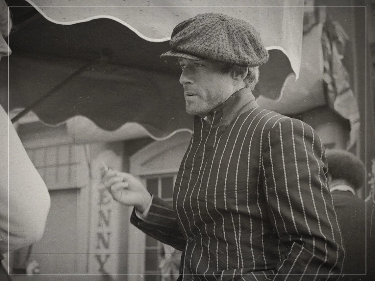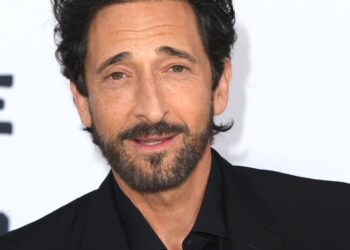Why Robert Redford Refused to Watch One of His Best Movies: “It Took Me 31 Years”
Robert Redford is no stranger to success. Over his decades-long career, the actor, director, and producer has been part of some of Hollywood’s most iconic films. However, in a rare and intriguing admission, Redford revealed that he refused to watch one of his most critically acclaimed movies—*The Sting*—for a staggering 31 years.
Released in 1973, *The Sting* was a smash hit that solidified Redford’s place as one of Hollywood’s brightest stars. The film, which also stars Paul Newman, became a cultural touchstone, winning seven Academy Awards, including Best Picture. Yet, despite the film’s success and enduring popularity, Redford avoided watching it for over three decades. Why? What led him to finally change his mind after all those years?
### A Reluctance to Relive the Past
For Redford, the decision to avoid *The Sting* was deeply personal. He has often expressed that, for many years, he found it difficult to revisit any of his films after they were completed. In interviews, he has mentioned that the process of making a film is emotionally exhausting, and once it’s finished, he prefers to move forward rather than look back. *The Sting* was no exception.
“It’s not that I didn’t love the movie,” Redford explained in a 2004 interview with *The New York Times*. “It’s just that, for me, watching something I’ve done feels like an intrusion into a space I’ve already left. I’m always thinking about how I could have done something differently, or what I was thinking at the time. I couldn’t just enjoy it.”
It’s a sentiment many actors and filmmakers share—there’s a sense of finality in the creative process, and watching the finished product can bring back memories of both the highs and the difficulties of its making.
### The Pressure of Success
The immense success of *The Sting* added a layer of complexity to Redford’s avoidance. While the film’s popularity catapulted him to even greater fame, it also created a certain pressure that Redford wasn’t eager to confront. By the early ’70s, he was already a well-established star after *Butch Cassidy and the Sundance Kid* (1969) and *The Way We Were* (1973). But *The Sting* was a massive hit that placed him in a different stratosphere of stardom.
Success can sometimes be an unwelcome weight, particularly for someone like Redford, who has often been described as introspective and resistant to the trappings of fame. The constant media attention, the public’s adoration, and the endless expectations that came with a film like *The Sting* led Redford to develop an aversion to revisiting it.
“I didn’t want to fall into the trap of being associated with one thing,” Redford once remarked, referring to his decision to avoid watching *The Sting*. “The movie was great, but I wanted to keep moving forward. I didn’t want to become a victim of nostalgia or of being ‘that guy.’”
### The Turning Point: 31 Years Later
It wasn’t until 2004, 31 years after the film’s release, that Redford finally decided to watch *The Sting*—and the decision was largely motivated by an unexpected occasion: the film was being screened as part of a special tribute at the Cannes Film Festival. Redford was invited to the festival as a guest of honor, and the organizers insisted that he watch the film again as part of the tribute.
At first, Redford hesitated. However, after some reflection, he agreed to watch it in the company of his peers, many of whom had been instrumental in its success. Redford later admitted that the experience of watching *The Sting* for the first time in over three decades was far from what he expected.
“It was an emotional experience,” Redford confessed in a later interview. “I was surprised by how much I enjoyed it. The humor, the energy, the performances—they held up. And it made me realize something: I was proud of it, not just because of the success, but because of the quality of the work itself.”
Watching *The Sting* once again allowed Redford to see the film through a different lens. He reflected on the collaboration with Paul Newman, the ingenious script by David S. Ward, and the direction of George Roy Hill. He also acknowledged the unique chemistry between him and Newman, which made their partnership unforgettable.
### The Impact of Time
The decision to finally watch *The Sting* also served as a moment of introspection for Redford. Over the years, he had built a reputation not just as an actor, but also as a director and activist. He had founded the Sundance Institute in 1981, an organization dedicated to supporting independent filmmakers, and had become an advocate for environmental and social causes. His work behind the camera, including films like *Ordinary People* (1980) and *A River Runs Through It* (1992), showcased his range as a storyteller.
By the time Redford sat down to watch *The Sting* in 2004, his career had evolved considerably. The films he had made since *The Sting* had been different, more personal, and more experimental. Watching the film with fresh eyes allowed him to appreciate the depth of his own journey as an artist and how far he had come since those early years.
“Watching it again, I realized it wasn’t just about the film itself,” Redford said. “It was about the people I worked with, the time and place it represented, and how it fit into my career as a whole. It was a key part of the puzzle.”
### The Legacy of *The Sting*
*The Sting* remains one of the most beloved films in cinematic history, and it continues to resonate with audiences decades after its release. The film’s intricate plot, sharp wit, and unforgettable performances helped cement Redford’s status as a leading man with both charm and substance. It also demonstrated his versatility as an actor, able to balance lighthearted comedy with the tension of a classic heist movie.
While Redford’s decision to avoid watching it for so long may have been driven by personal reasons, it’s clear that his relationship with the film has evolved over time. In many ways, *The Sting* is a reflection of Redford’s own journey in Hollywood—a mix of success, challenge, and, eventually, acceptance.
By the time he finally watched it again, Redford had a deep sense of appreciation for the film and its place in his career. It was no longer just a reminder of a period of intense success, but a part of his artistic legacy.
“I wasn’t just a guy in a movie anymore,” Redford said, reflecting on his decision to revisit *The Sting*. “I was someone who had experienced a lot of life, who had grown, and who had a greater sense of what this business, this art form, really meant.”
### Conclusion: A Long-Awaited Reconnection
Robert Redford’s reluctance to watch *The Sting* for 31 years serves as a powerful reminder of the emotional complexities that come with a successful career in Hollywood. It’s not just about the films themselves, but about the personal and professional milestones that shape an artist’s journey. For Redford, watching *The Sting* again in 2004 was a chance to reconnect with a pivotal moment in his career, to see it not just through the eyes of the actor who made it, but through the perspective of someone who had lived a full and varied life.
In the end, *The Sting* remains one of Redford’s finest achievements, both a product of its time and a lasting testament to his talent and perseverance. It may have taken him 31 years to watch it, but when he did, he discovered something important: some things are worth waiting for, and some things only improve with time.














